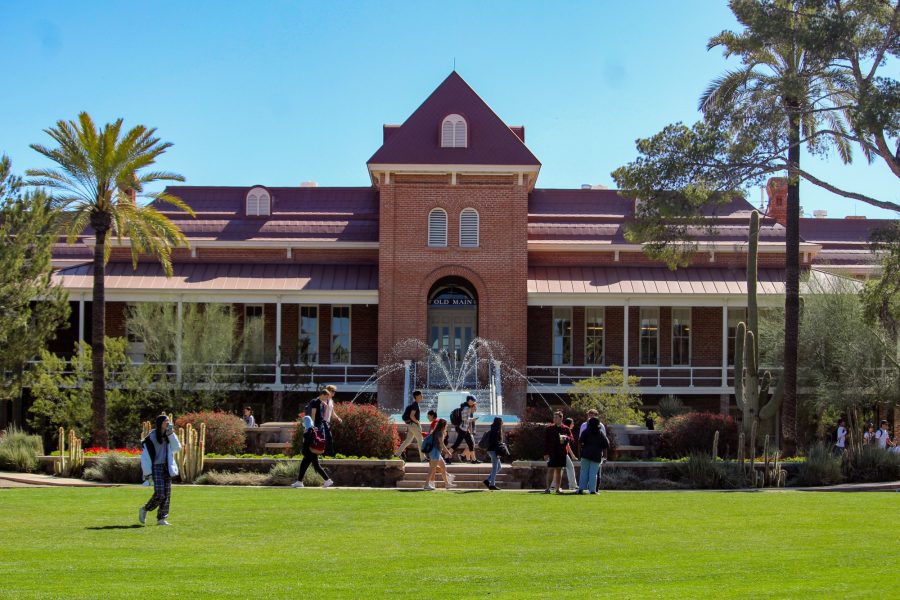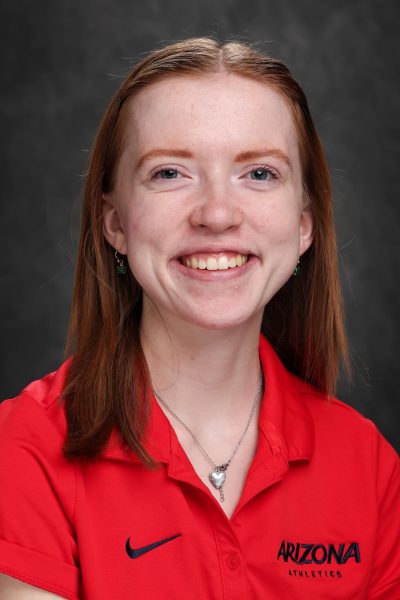Following the on-campus fatal shooting of professor Thomas Meixner last October, safety and security rose to the forefront of campus discourse at the University of Arizona and have compelled debates, leadership changes and calls for systemic transformation.
Initial issues following the incident
Following the October shooting, President Dr. Robert C. Robbins hired the PAX Group, a security consulting firm, to evaluate the UA’s campus safety and offer recommendations for improvement. After months of analysis and conversation with members of the campus community, the group released a report in March addressing the four main areas of crisis management in which the UA needs improvement: Threat Assessment Management, Crisis Response, the University of Arizona Police Department and overall communications.
In early February, before the PAX Group had finished its analysis of campus security, members of the University of Arizona General Faculty Committee on University Safety for All wrote and released an interim report that detailed the university’s response failures in light of the Oct. 5 shooting.
The report, titled “Oversight and Response Failure: Broken Trust. Lessons From the Events Surrounding the Murder of Professor Thomas Meixner,” addressed not just the lead up to the shooting and the university’s immediate response to it, but also the university’s handling of harassment at the UA College of Law in 2019, the threats received by a Daily Wildcat reporter and an incident involving a queer, Black disabled student at the Martin Luther King Jr. building on campus.
This committee report concluded that there were four key areas in which the university failed.
Much like the PAX Group found a few months later, one of these systemic flaws was a failure to install an effective risk management system for risks of violence. The committee report noted that “the University does not have any office tasked with the responsibilities to detect, monitor, and address violence risks. As a result, [the Dean of Students Office, Office of the General Council, Office of Institutional Equity] and UAPD employees do not have a clearly identified point of contact to report known violence risks.”
Prior to the release of the PAX Group and faculty committee reports, the university began taking steps to improve campus security based on expert opinion and student/faculty input.
Systemic changes so far
In an email sent to the student body in January, Robbins listed certain changes being made to enhance campus safety, some of which included the security assessment of university buildings, online preparedness training for students and faculty, the installation of “fire and safety compliant locks to classroom doors” and the expansion of background checks to include graduate assistants and associates.
A few prominent changes in leadership then took place in the aftermath of the PAX report’s publication, the first of which being Paula Balafas’ decision to step down as Chief of the University of Arizona Police Department. Balafas was replaced by Chris Olson, commander of the Oro Valley Police Department’s field services division and a former UAPD officer.
A “chronic trust problem” was a key issue addressed in the committee report, referencing a community-wide distrust in university security and reporting systems like the Dean of Students Office or the UAPD. In his new role, Olson is hoping to increase police engagement with the campus community and build trust between the community and the UAPD.
“My goal here is to take the resources I have to ensure that our public sees greater police presence. Now, that doesn’t mean over-policing. That just means greater police presence with engagement,” Olson said. “I want officers out of their vehicles, engaged with community members earning their trust because quite honestly, the greatest force multiplier that we have is our community.’’
In an email sent to students and faculty on March 27, Robbins announced that Steve Patterson, an FBI veteran, would be filling the role of interim chief safety officer, and would be responsible for “implementing the PAX Group’s recommendations and coordinating safety initiatives across the University” in addition to supervising the UA’s Threat Assessment Management Team. Another of the systemic issues the committee and PAX reports addressed was the inability of the TAMT to respond to the sheer scope of issues placed under its jurisdiction.
According to Patterson, many changes have been made to enhance the efficacy of TAMT since he began in a consulting role in November. The group has added multiple consultants to the team, including Gene Deisinger, president of Deisinger Consulting, LLC and Andrew Perkins, assistant professor of practice in the UA psychology department. The TAMT has also appointed a new director, Jessica Semmann, who will focus on education and engagement with the campus community as classes begin in the fall.
“As we continue to fine-tune the threat assessment process, [Semmann’s] next role will be turning outwardly, and really educating the campus community on what the threat assessment team does; what is a threat and what maybe is not a threat, how to address problems situations and really enable our campus community in how to deal with conflict resolution a little bit better,” Patterson said.
In addition to supervising the UA’s TAMT, Patterson also manages the Office of Public Safety, a newly established institution that is composed of the UAPD and TAMT.
The goal of this office, according to Patterson, is to coordinate safety efforts among many different groups at the UA who are in some part responsible for campus security. Increasing awareness of campus happenings and communication between groups like Parking & Transportation Services, Facilities Management and the UAPD, Patterson hopes, will create a more efficient and unified approach to risk management and safety on campus.
Robbins also announced in March the formation of a Campus Safety Advisory Commission, made up of representatives from the campus community, to advise Patterson and other university leadership on how best to implement the recommendations from the PAX report.
According to Patterson, this commission is key to starting important conversations with groups across campus. Patterson has worked closely with Jennifer Hatcher, a professor of public health at the UA, to connect with marginalized groups on campus to ensure their voices are being heard in conversations about safety.
This outreach is also a point of emphasis for Olson, who hopes to see a trusting relationship develop between these marginalized groups and the UAPD. Olson’s primary goal for the UAPD is protection, which he believes is the best way to earn the faith of community members.
“All people want to do is have a high quality life, right? They want to come to school, they want to enjoy the campus, they want to get their education, they want to attend an event, they want to attend a march, whatever it might be,” Olson said. “They just want to have the freedom and the protections to do that, and this is where I think the police department comes in, as it will do that for all people. All races, creeds, orientations […] And I think once we demonstrate that we can protect all segments of our community, that trust will build.”
Olson acknowledged that there are many people on campus who may not feel comfortable reporting directly to the UAPD and spoke to the power of support from faculty and staff on campus, as well as resources like Counseling and Psychiatric Services.
“Victim advocacy is a huge focus […] They don’t have to work by themselves. There are people on this campus that will be advocates for them as they go through that process,” Olson said.
This emphasis on victim advocacy is conveyed through Olson’s work to establish a “victim advocate” position within the UAPD. The person in this role will support both victim and detective through the reporting process at the UAPD, according to Olson.
New campus initiatives
The university and UAPD have launched a variety of initiatives since last October that aim to rebuild trust in safety institutions and create a more secure, aware and involved campus environment.
In May, university leadership also announced the formation of a “mobile crisis team” and the creation of a new university safety website. The crisis team will provide support to students through the UA’s Counseling and Psychiatric Services, specifically in situations where UAPD is not the entity best suited to resolve a situation or offer support. The new website, safety.arizona.edu, “includes in one central location actions plans, the university’s latest campus security updates and resources for students and employees,” according to UA News.
The university has made updates to the UAlert system to improve its efficacy; every UA student’s email is immediately added to a list to receive notifications, and there will be no opt-out options for students. The Office of Emergency Management, Risk Management, and Facilities Management worked with FM Building Managers to update over 170 individual campus building emergency plans, which will be available for the campus community to view in August.
Another initiative the UAPD will implement to improve community safety and relationships is the Blue Envelope program, a traffic safety program started at the Southern Connecticut State University that teaches officers how to respond to traffic stops involving individuals with autism spectrum disorder.
Ultimately, Olson’s goals in the coming year revolve around getting the Blue Envelope program, a community police academy and victim advocacy program, all up and running in the Tucson community. Additionally, Olson hopes to implement what he deems are the three necessary pillars for an effective UAPD: trust, unity and service readiness.
Patterson hopes to continue conversations with the campus community and increase awareness among its members. A few years down the line, Patterson also hopes to see the UA be known nationwide as a preeminent university when it comes to safety and security measures.
As the school year progresses, members of the community can also expect more communication and updates coming from the Office of Public Safety, according to Patterson.
Follow the Daily Wildcat on Instagram and Twitter (X)










